A History of the County of Buckingham: Volume 2. Originally published by Victoria County History, London, 1908.
This free content was digitised by double rekeying. All rights reserved.
'Parishes: Bierton', in A History of the County of Buckingham: Volume 2, ed. William Page (London, 1908), British History Online https://prod.british-history.ac.uk/vch/bucks/vol2/pp320-327 [accessed 23 April 2025].
'Parishes: Bierton', in A History of the County of Buckingham: Volume 2. Edited by William Page (London, 1908), British History Online, accessed April 23, 2025, https://prod.british-history.ac.uk/vch/bucks/vol2/pp320-327.
"Parishes: Bierton". A History of the County of Buckingham: Volume 2. Ed. William Page (London, 1908), British History Online. Web. 23 April 2025. https://prod.british-history.ac.uk/vch/bucks/vol2/pp320-327.
In this section
BIERTON (WITH BROUGHTON)
Burton (xiii cent.); Beerton (xv cent.).
Bierton parish lies in the Vale of Aylesbury, to the north-east of Aylesbury parish. It contains 2,476½ acres, (fn. 1) which are mainly laid down in permanent grass, only about 396 acres being arable land. (fn. 2) The population is mainly employed on grazing farms; duck-breeding is also carried on to a very considerable extent. The subsoil is Portland Beds and Kimmeridge Clay, the surface clay. (fn. 3) The land lies for the most part between 200 ft. and 300 ft. above the Ordnance datum, the highest point being only 214 ft. (fn. 4) The parish is well watered; Thistle Brook forms the northern boundary, and various streams rise near the hamlet of Broughton, flowing northwards. There is a most at Manor Farm. The Aylesbury branch of the Grand Junction Canal also crosses the parish. The village of Bierton lies about a mile and a half from Aylesbury, on the main road to Leighton Buzzard. A branch road turns off at the north end of the village to Hulcott. The village spreads along the road, and is composed of modern houses, with one or two of an older date, which are not of any particular interest. The church lies at the south-west end of the village, and is surrounded by a small churchyard, with a detached portion, now used, to the east. The hamlet of Burcott almost forms a part of the village, and consists of a few cottages and farm houses. Broughton, another hamlet, comprises a row of small cottages. The Aylesbury branch of the London and North-Western Railway crosses the parish, and the nearest station is at Aylesbury. The most important house is Bierton House, the residence of Mr. J. W. Grist. Various neolithic implements and a British urn have been dug up at different times. (fn. 5) The parishes of Bierton and Hulcott were inclosed under the same Act of Parliament, and the award is dated 15 July 1780. (fn. 6)
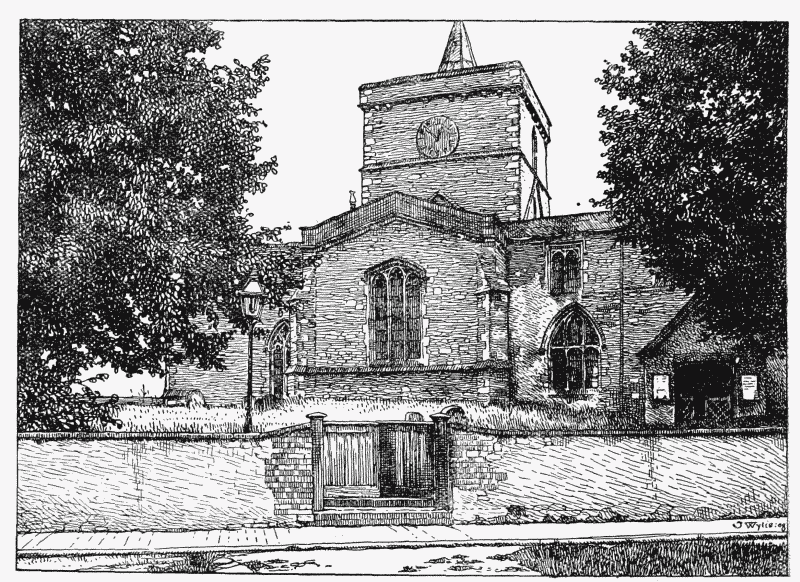
Bierton Church from the North
Manors
The manor of BIERTON was probably held as parcel of the manor of Aylesbury, which was in the hands of the king at the time of the Domesday Survey. (fn. 7) In 1258, in a lawsuit as to lands in Bierton, the defendants did not appear, pleading that the manor of Bierton was a member of Aylesbury, which belonged to the ancient demesne of the Crown, and that therefore they could only be impleaded by a little writ of right-close. (fn. 8) Aylesbury Manor was in the hands of the Mandevilles, Earls of Essex, in the 12th century. (fn. 9) A new grant was made by King John to his favourite Geoffrey Fitz Piers of the manor with its appurtenances at an increased rental. (fn. 10) Geoffrey was to hold it with the same right and exemptions that Earl William de Mandeville had had. This probably included the manor of Bierton, since Fitz Piers' grandson and successor, (fn. 11) Lord Richard Fitz John, died seised before 1297 of the manor of Aylesbury with the hamlet of Bierton. (fn. 12) Bierton was assigned to his widow Emma to hold in dower, but his possessions were finally divided among his four sisters or their heirs. (fn. 13) The manor of Bierton was assigned to John the wife of Theobald le Botiller, and it has ever since been held by her descendants or their successors as appendant to the manor of Aylesbury (q.v.). (fn. 14) The manors of Aylesbury and Bierton are at the present day in the hands of the trustees of the late Mr. John Parker.
Certain lands and rents in Bierton and Aylesbury were assigned to Richard de Burgh, Earl of Ulster, on the partition of Richard Fitz John's lands, (fn. 15) and these were afterwards known as the manor of BIERTON alias BIERTON and HULCOTT. Richard de Burgh received the reversion of 9½ virgates of land, the suit and service of certain tenants in villeinage, and rent to the amount of £10 0s. 9¾d., to fall to him on the death of Emma the widow of Richard Fitz John. He died before this reversion fell in, leaving his son William as his heir. (fn. 16) The latter was a minor, and the king in 1333 committed his lands and rents in Bierton to Elizabeth de Burgh to hold during the young earl's minority. (fn. 17) The latter died the next year seised of rent in Bierton, which was held by his widow in dower. (fn. 18) His only daughter and heiress Elizabeth was one year old at his death. (fn. 19) She afterwards married Lionel, Duke of Clarence, the third son of Edward III. (fn. 20) Their only daughter and heiress Philippa married Edmund Mortimer, Earl of March and Ulster, (fn. 21) who died seised of the manor of Whaddon (part of the possessions of Richard Fitz John), 'with its members of Bierton and Amersham.' (fn. 22) His heir Roger was a minor at the time of his father's death. Roger was killed in 1398, and his son Edmund died in 1424–5. (fn. 23) His possessions passed to his nephew Richard Duke of York, (fn. 24) and from him descended to Edward IV. The manor of Bierton was granted by the king in 1461 to his mother Cecily Duchess of York, for life, in recompense for her jointure. (fn. 25) Richard III confirmed this grant, (fn. 26) and in 1492 the reversion of the manor was granted to her granddaughter Elizabeth of York for her jointure on her marriage with Henry VII. (fn. 27) After her death her sisters and co-heiresses, Katherine Courtenay, Countess of Devon, and Anne Howard, claimed the manor, but in 1511 (fn. 28) it was settled on Henry VIII as the son and heir of Elizabeth. Katherine of Aragon held lands and rents in Bierton, (fn. 29) and the manor was granted in turn to Jane Seymour, Anne of Cleves, and Katherine Howard. (fn. 30) After the execution of the last-named queen the manor of Bierton remained in the hands of the Crown until James I in 1603 granted it to Anne of Denmark as part of her dower. (fn. 31) After the death of the queen the manor was granted to Sir Henry Hobart and others (fn. 32) as trustees for Prince Charles, afterwards Charles I. Soon after his accession to the throne it was released to the mayor and citizens of London as security for a loan of money, (fn. 33) and was to be held at the accustomed rent. In 1650 Thomas Greene bought this rent from the trustees for the sale of the fee-farm rents, formerly payable to the Crown. (fn. 34) Six years later he was said to be a lunatic, but his heir was unknown, so that the rent presumably again came into the hands of the Government. (fn. 35) After the Restoration, Sir Allan Appesley is said by Lipscomb (fn. 36) to have conveyed the fee-farm rent of £10 12s. 8¾d. issuing out of the manor of Bierton to Thomas Morley, who reconveyed it to Timothy Neale in 1675. (fn. 37) The same historian also mentions a sale of the manor itself by Alexander Hawkins to Timothy Neale, (fn. 38) and the Neales certainly held the manor of Bierton some years later. John Neale was seised in 1719, (fn. 39) together with the manor of Hulcott (q.v.), and from this time these manors have been held together, and are now in the possession of Mr. Leopold de Rothschild.
The family of Stonors held lands in Bierton which were afterwards called the manor of STONORS alias STONORS CROFT alias BIERTON-STONORS. In 1325 John de Stonor and his son Richard held lands in Aylesbury, Walton, Bierton, Hulcott, and Caldecott. (fn. 40) In an inquisition taken in 1336 (fn. 41) it was found that John de Stonor, after making certain grants in mortmain, would keep the manor of BiertonStonors, from which he could perform his foreign services. He held it by military service of the Earl of Ormond. He died in 1354, seised of lands and tenements in the township of Bierton. (fn. 42) His son and heir was John de Stonor, but in 1370 Edmund de Stonor (fn. 43) granted an annual rent out of the manor to the Bishop of Winchester. John de Stonor, son and heir of Edmund, died (fn. 44) seised of rents in Bierton in 1389. His brother and heir Ralph de Stonor granted the manor of Bierton-Stonors to William Sutton of Camden (fn. 45) and others, but this was presumably only a mortgage, (fn. 46) since the manor was afterwards recovered by the Stonors. Gilbert the son and heir of Ralph de Stonor was a minor at the time of his father's death, (fn. 47) and he died while still in the king's wardship in 1396. (fn. 48) The manor of Bierton-Stonors is not mentioned among his lands in an inquisition taken in 1416, (fn. 49) so that it was probably still in the hands of mortgagees. His heir was his brother Thomas, who came of age in that year, (fn. 50) and probably recovered the manor. Another Thomas de Stonor, presumably his heir, together with his wife Joan, sold it in 1469 (fn. 51) to Sir Ralph Verney and others. Sir Ralph, who died in 1478, was seised of lands and tenements in Bierton, but it is probable that he had settled the manor on his second son, another Sir Ralph Verney. (fn. 52) The latter died seised of the manor and had settled it on John Cheyne (fn. 53) and others to hold, to the use of his wife Eleanor for her life, and then to the use of John Verney his son and his issue. John died before 1549, (fn. 54) leaving a daughter Mary as his heir. His widow Dorothy entered the manor on his death, and a long lawsuit (fn. 55) was brought against her by Mary, who had married Lewis Reynolds. The result is not given, but in 1552 Dorothy Verney and Lewis Reynolds sold the manor for £236 to Leonard Chamberlain, Robert Woodlest, and William Howse. (fn. 56) The manor of Bierton-Stonors in shortly afterwards passed into the possession of John Bosse, who died in 1558, (fn. 57) seised of lands called Stonors in Bierton. In the inquisition taken after his death it is impossible to discover if his property was called a manor or not. His son Richard was his heir, (fn. 58) and he held lands and rent in Bierton in 1585. (fn. 59) Some years later Sir Edmund Verney made a claim for the lands of his ancestors in Bierton, and sued Samuel Bosse and Francis Howse. (fn. 60) Samuel was the son of Richard Bosse, (fn. 61) and he held the manor of Bierton-Stonors at the time of this lawsuit in 1598. (fn. 62) The result is not given, but the plaintiff lost his case, since Samuel Bosse continued in possession. He died seised of a capital messuage (fn. 63) in Bierton. John Bosse was his son and heir, (fn. 64) but Bierton-Stonors was settled in 1614 (fn. 65) by Samuel on his second son Thomas on his marriage with Grace Butterfield. Thomas Bosse held it in 1637 and died seised in the same year. (fn. 66) His heir does not appear, but the manor afterwards became united with the manor of Waynford (q.v.), passing to the family of Howse, possibly through the Temples. (fn. 67) It had passed to one of the Howse family before 1670, (fn. 68) from which date the name of Waynford is rarely used, their manor being called in that year the manor of Bierton.
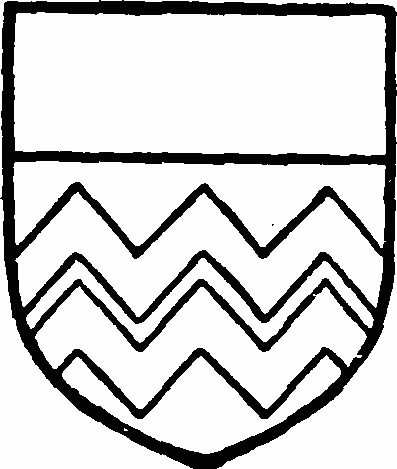
Stonors. Azure two bars dancetty or and a chief argent.
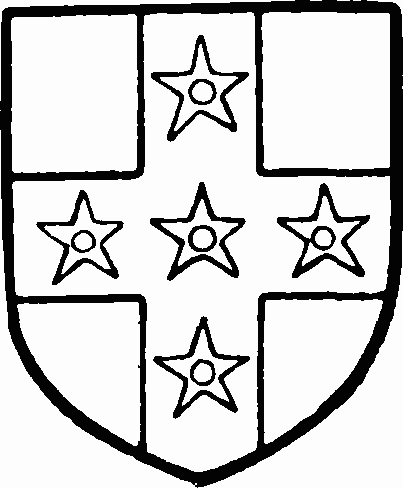
Verney. Azure a cross argent with five pierced molets gules thereon.
William Waynford held land in Bierton during the reign of Henry VI, (fn. 69) which was afterwards known as WAYNFORD'S Manor. On the accession of Edward IV Waynford forfeited his lands, having been an active partisan of the Lancastrian party during the Wars of the Roses. In consequence his lands were granted in 1462 to Thomas Seyntleger for life, (fn. 70) but in 1467 Sir Ralph Verney (fn. 71) obtained a grant of them for himself and the heirs of his body, to hold by military service. The grant consisted of three messuages and 150 acres of land and meadow. Waynford's Manor appears to have passed like BiertonStonors to Ralph the younger son of the first Sir Ralph Verney and then to his son and heir John. (fn. 72) On the death of this John Verney (fn. 73) his widow Dorothy held Waynford's Manor, but it is also said to have been sold by Sir Ralph Verney, presumably the father of John, to Robert Woodlyfe, (fn. 74) who immediately sold it to William Howse for no profit because he found his title was defective. (fn. 75) There is, however, considerable obscurity about the history of the Verney lands in Bierton at this time, but William Howse certainly seems to have obtained Waynford's Manor before 1553. (fn. 76) In that year he obtained a quitclaim from Edmund Verney, (fn. 77) the direct descendant of the eldest son of the first Sir Ralph Verney, (fn. 78) who was also the heir of the younger branch of which the last representative was Mary Reynolds. The brother and heir of this Edmund Verney, himself Edmund by name, (fn. 79) attempted to recover Waynford's Manor at the same time as Bierton-Stonors in 1598. (fn. 80) Francis Howse, the son of William Howse, held it at that time (fn. 81) and retained it against Sir Edmund's attacks. Thomas Howse of Bierton was summoned to make proof of his arms and gentry in 1634, (fn. 82) and was presumably a descendant of Francis. He was returned as a papist and delinquent under the Commonwealth, and his estates in Bierton were sequestered. (fn. 83) He died before 1647, when they were valued for the Committee for Compounding at £60 a year. (fn. 84) In 1670 (fn. 85) John Howse and his wife Martha held the manor. In 1697 (fn. 86) their son and heir was Finch Howse, and in 1756 John Temple Howse and his wife Mary had succeeded to the manor. (fn. 87) In 1801 the manor of BiertonStonors with Waynford was bought by the Marquis of Buckingham, (fn. 88) afterwards Duke of Buckingham and Chandos. It was sold with the greater part of his property in the middle of the 19th century, but the name of the manor is now lost, and it does not seem possible to identify the land which it comprised.
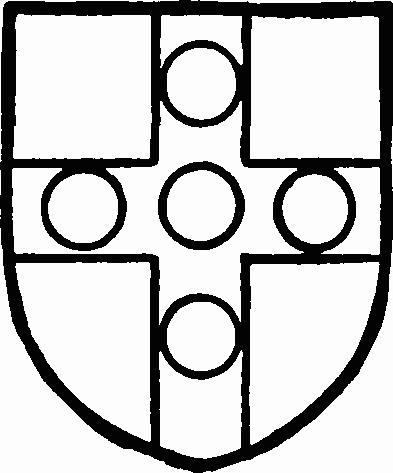
Grenville, Duke of Buckingham and Chandos. Vert a cross argent with five roundels gules thereon.
Before the Norman Conquest, (fn. 89) Edward, a thegn of King Edward the Confessor, held the greater part of the township of BROUGHTON, and could sell his manor there at will. It was then (T.R.E.) worth £10 a year. At the time of the Domesday Survey William de Warenne, Earl of Surrey, was lord of the manor, which had depreciated in value by £2. (fn. 90) Presumably it descended to his son and grandson in turn, and then to Isabella, (fn. 91) the heiress of the Warennes, since her husband, William, Count of Boulogne, the second son of King Stephen, confirmed a charter granting land in Broughton (fn. 92) to Missenden Abbey. This grant resulted in the division of the township into two parts, and the manor remaining with the Count of Boulogne was known as the manor of BROUGHTON PARVA alias HOLAND alias LOVEL alias STAVELY. At the death of the count his lands escheated to the Crown, (fn. 93) and the manor was presumably not alienated until either Henry III or Edward I granted it to Edmund, Earl of Lancaster, the second son of Henry III. He died seised of the manor of Broughton Parva in 1295, (fn. 94) and it descended to his son Thomas, Earl of Lancaster, (fn. 95) who subinfeudated it, but from this time it was held of the earldom or duchy of Lancaster. (fn. 96)
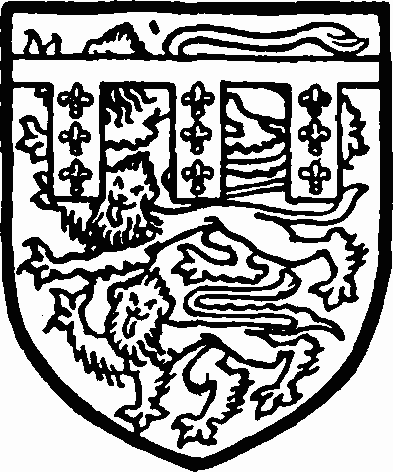
Thomas, Earl of Lancaster. England with a lable of France.
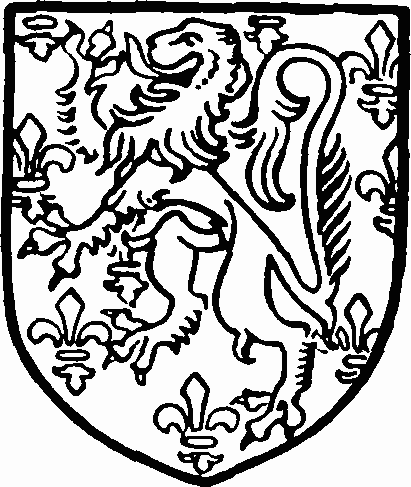
Holand. Azure powdered with fleurs-de-lis a lion argent.
The earl granted the manor about 1320 to Robert de Holand (fn. 97) and his wife Maud, but when his lands were seized, after his execution by Edward II, the Holands were dispossessed of Broughton Parva. (fn. 98) Maud de Holand and her son Robert petitioned Edward III in 1328 to recover their lands, and were successful in obtaining them. (fn. 99) Since the earldom of Lancaster was in the king's hands at this time, he held the manor during the minority (fn. 100) of the young Robert de Holand. Maud seems, however, to have recovered the manor, possibly after her son had come of age, and she died seised in 1349. (fn. 101) It seems probable that she had granted it for life or a term of years to her younger son Thomas, afterwards Earl of Kent. Thomas held it in 1346, (fn. 102) and after the death of his mother obtained a renewal of the grant (fn. 103) of the manor for life from his brother. On the death of Thomas in 1361 (fn. 104) it reverted to Robert de Holand, who died seised of it in 1373; (fn. 105) his son, another Robert de Holand, had predeceased him, leaving a daughter Matilda as his heir. She married Sir John Lovel, (fn. 106) and the manor of Broughton Parva passed to them on the death of her grandfather. (fn. 107) Sir John Lovel, their son and heir, succeeded his mother in possession of the manor, and also died seised in 1413. (fn. 108) Another John Lovel, a minor, was his son and heir, (fn. 109) but probably a mistake was made in the inquisition on his lands, made after the death of Sir John, as a William Lovel (fn. 110) succeeded to the estates. The manor of Broughton Parva was, however, held by his mother Eleanor for life, (fn. 111) but he granted the reversion to Henry Archbishop of Canterbury, Alice Lady Deyncourt, and others. (fn. 112) Afterwards, by a further grant, Sir William Lovel transferred it to William Tresham and his heirs, on condition that the latter would give up certain deeds that were in his charge, between Sir William and Sir John Radcliff. (fn. 113) The two survivors of the first grant, John Potter and John Waget, also transferred their right (fn. 114) in the manor to William Tresham to hold to him and his heirs and assigns. On the death of Sir William Lovel in 1454 (fn. 115) his son Sir John Lovel was his heir, and in 1461 (fn. 116) he obtained a ratification of the manor of Broughton Parva, of which he was said to be seised in fee-tail, but no descendant of his appears to have held any further right in the manor. William Tresham died seised in 1450, (fn. 117) and was succeeded by Thomas Tresham, his son and heir. The latter sold the manor in 1466 (fn. 118) to William Stavely, from whom the manor obtained its fourth name. In 1495 (fn. 119) Stavely made a settlement of it to the use of himself and his wife Alice for life, and then to the use of his son George Stavely. Alice died in 1500 (fn. 120) seised of the manor, which passed to George Stavely, who settled it on himself and his wife Isabel by charter in 1523; (fn. 121) he held it till his death in 1525, (fn. 122) when his son and heir John succeeded him. John Stavely mortgaged Broughton Parva (fn. 123) to Thomas Walker and Simon Lowe, two London merchants, but in 1544 a sale of the manor was made by Stavely, Walker, and Lowe (fn. 124) to Alice Baldwin, daughter of Sir John Baldwin, for £340. In a copy of the will of Sir John it appears, however, that he bought the manor from John Stavely, but that he put his daughter Alice, (fn. 125) together with William Welshe and John Gelly, in seisin. Sir John Baldwin's lands (fn. 126) were inherited by his two grandsons and co-heirs, Thomas Pakington and John Burlace, (fn. 127) and at the division of his lands between them Broughton Parva came to Thomas Pakington. (fn. 128) His descendants held the manor until 1801, (fn. 129) when Sir John Pakington sold it to the Duke of Buckingham and Chandos. (fn. 130) On the sale of the duke's lands it was bought by Mr. Tindal, (fn. 131) at the same time as the manor of Bierton, and is now in the hands of the trustees of the late Mr. John Parker.
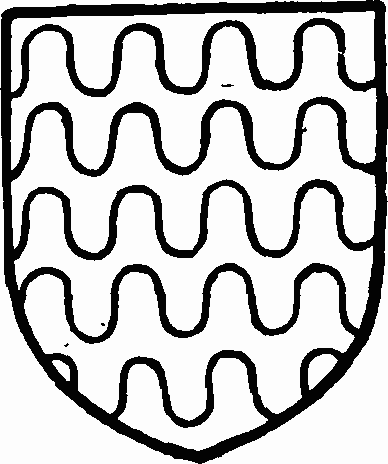
Lovel. Barry wavy or and gules.
In 1616–17 James I (fn. 132) granted the manor of Broughton Parva to Richard Goodwin and Hugh Dashfield, their heirs and assigns, for £110 and the rent of 12 marks a year. They may, however, have been fishing grantees, since they never had seisin of the manor, which was held at that time by the Pakingtons, a rental of whose tenants exists for the year 1627. (fn. 133)
The Earl of Lancaster (fn. 134) granted the manor of Broughton Parva to Robert de Holand and his wife in fee-tail. Matilda held it (fn. 135) by the service of paying one rose a year to the Earl of Lancaster, but the military service from half a knight's fee was also due to the king, and was performed by her son Thomas de Holand. (fn. 136)
Sir William Lovel and William Tresham, (fn. 137) however, are said to have held the manor of John Newport, and Tresham paid the rent of 1 lb. of cummin. Alice the widow of William Stavely (fn. 138) held of the king as of the duchy of Lancaster by fealty and the rent of 13d. a year. By the time of Sir Thomas Pakington, who died in 1571, (fn. 139) the tenure was unknown, and presumably all payment of rent to the duchy had ceased during the many changes of ownership in the 15th century.
The Pakingtons held the view of frankpledge (fn. 140) in Broughton Parva all the time that the manor was in their possession. (fn. 141) In 1772 (fn. 142) a free fishery there is also mentioned.
In the first half of the 12th century various alienations were made of lands in Broughton to the abbey of Missenden, which afterwards formed the manor of BROUGHTON MAGNA or ABBOT'S BROUGHTON. Hugh de Gurney granted his whole tenement to Missenden (fn. 143) with the consent of his wife Milicent and his son Hugh. He held of Robert Maunsel, who made an agreement with the canons as to the service due from the tenement, and the Count of Boulogne confirmed both grants. The manor of Abbot's Broughton was held by the abbey until its dissolution in 1538. (fn. 144) Three years later the king granted it to Sir John Baldwin, (fn. 145) from whom it descended, like Broughton Parva, to Thomas Pakington, and was held by his descendants during the 17th century. In 1665–6 Sir John Pakington, bart., and his wife Dorothy (fn. 146) granted a lease of the manor to John Backwell for ninety-nine years, for the rent of one grain of pepper, in return for £200. Various assignments of this lease appear to have been made; in 1670 (fn. 147) William Reeve and his wife Sarah, together with Edward Backwell, quitclaimed the manor to Thomas Bowdler for £240, but in the next year (fn. 148) they sold the manor and farm to Henry Johnson. The latter also seems to have obtained the manor from Sir John Pakington (fn. 149) and his son and heir, another John Pakington. Its subsequent history is obscure, but it seems to have afterwards come into the possession of William Meade. (fn. 150) He sold it in 1721–2 (fn. 151) to the trustees of Aylesbury Grammar School, who bought the manor of Abbot's Broughton (fn. 152) with part of the money given in 1714 by Mr. Henry Philips for the re-endowment of the school. The trustees held it in 1813, (fn. 153) and are the lords of the manor at the present day.
The manor of Abbot's Broughton was held by the abbey of Missenden in frankalmoign, apparently in chief of the king. (fn. 154) Sir John Baldwin, however, held it as one-tenth of a knight's fee, and paid a yearly rent of 40s. 9d. (fn. 155)
The abbot and canons of Missenden obtained a grant (fn. 156) of free warren in their demesne lands in Broughton in 1301–2, which was confirmed by Henry VI. (fn. 157) The abbot also held a view of frankpledge in 1254, (fn. 158) and paid 12s. for hidage from Broughton and Hulcott, which then formed one township.
A mill is mentioned at Broughton in Domesday Book, (fn. 159) being then worth 10s a year, and a watermill is mentioned in an extent of the manor of Broughton Parva in 1296. (fn. 160) The abbey of Missenden held a mill in Broughton, (fn. 161) which was granted to it before 1330. In 1721–2 a mill is mentioned (fn. 162) in connexion with the manor of Abbot's Broughton.
In the time of Edward the Confessor one hide and three virgates of land in BORTONE was held by two sokemen, (fn. 163) one a man of Alwin Varus and the other of Earl Leofwine. This has been identified with Bierton in the Domesday Survey, (fn. 164) but from its postConquest history it seems more probable that the land lay in Broughton. In 1086 it was held by the Bishop of Bayeux, who had subinfeudated it to a tenant named Roger. (fn. 165) As overlord and tenant the bishop and Roger also held Weston Turville and Bedgrave, (fn. 166) and it seems most probable that this land followed the descent of the manor of Weston Turville. (fn. 167) Part of the land belonging to the manor of Weston Butlers, afterwards united to the manor of Weston Turville, (fn. 168) lay in Broughton, and part of Broughton, like Weston Turville, belonged to the duchy of Lancaster. (fn. 169)
Church
The church of ST. JAMES is a cruciform structure, the internal measurements of which are as follows: Chancel, 14 ft. 6 in. by 21 ft. 9 in.; central tower about 13 ft. 9 in. square; north transept, 17 ft. by 16 ft. 3 in.; south transept, 16 ft. 8 in. square; nave, 17 ft. 6 in. by 52 ft. 5 in.; and north and south aisles, 7 ft. 3 in. wide, with a north porch.
The church appears to have been built complete about the middle of the 14th century, since which time practically nothing has been done to alter the plan. At a late date, perhaps in 1636, the original high-pitched roof over the nave and aisles was removed and a low-pitched roof put in its place, the aisle walls being heightened and an upper tier of windows inserted in them—probably to light galleries. It is probable that the roofs of the transepts were also treated in this way at the same time, but the whole church was reroofed about the middle of the 19th century. The windows have also been altered at various dates from the 15th century to the present day. But despite these various alterations and additions the church remains a notable example of c. 1330–40, the nave arcades and the arches of the tower being particularly handsome in proportion and well thought-out in detail, while the tracery of such of the original windows as remain is of the best character.
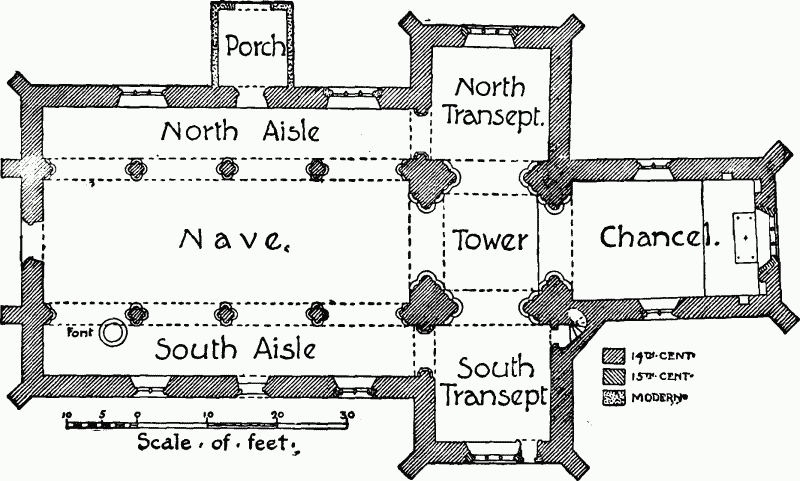
Plan of Bierton Church
The east window is of three cinquefoiled lights with 15th-century tracery, and is a modern insertion, the head and defaced moulded jambs and rear arch of the original and wider 14th-century window still being visible. On either side of this are image niches also of 14th-century date with cinquefoiled heads. In the north wall of the chancel is a fairly large niche with moulded jambs and a moulded trefoiled head, possibly part of an Easter sepulchre, and of the same date as the chancel. The only window in this wall is also original. It is of two trefoiled lights with tracery in the form of trefoils with a quatrefoil over. The rear arch and the jambs of the internal splay are moulded with a broad wave mould, and there are internal and external labels with drips in the form of heads. At the east end of the south wall is a piscina with shafted jambs and moulded two-centred head, all considerably restored; and in this wall is also a duplicate of the north window already described. The roof of the chancel is a modern one of steep pitch.
The central tower is carried on four large clustered piers and arches of three simply moulded orders, the western arch having a label towards the nave.
The tower stair is in the north-east angle of the south transept, entered from the transept, and the belfry windows are plain pointed openings filled with luffer boards. The tower finishes with a low roof and a plain parapet which projects on corbels carved with ball-flowers. The steeple is said to have fallen in a report of the church made in 1636, and its present upper stage is probably a rebuilding of that date.
The north transept contains one much-restored 15th-century north window of three cinquefoiled lights, under a four-centred head. There are no east or west windows; the arch to the north aisle is of two plain chamfered orders the outer of which is continuous, the inner having half-octagonal moulded capitals like those of the nave arcades.
The south transept has a south window like that in the north transept, with traces in its jambs and head of the original 14th-century light. In this transept are two doors, one to the tower stair and the other external. The former has a trefoiled head and a crocketed label of late 14th-century date, and seems to have been added after the church was completed, the label cutting into the respond of the tower arch. The external door is in the south wall and has a plain four-centred head. It has been cut through the back of a single sedile, evidently part of the original fittings, with an ogee cinquefoiled head, a crocketed and finialed hood-mould and small side buttresses ornamented with traceried panelling. The underside of the head is carved to imitate rib-vaulting. There is also a moulded 14th-century image bracket on the east wall with two mail-clad heads supporting it.
The nave arcades are of four bays, the piers being composed of four half-round shafts with moulded fillets between, and having circular moulded bases and capitals similar to, but not identical with, those of the tower piers. The arches are two-centred, and of two orders, both of which, towards the nave, are moulded with a deep hollow between two small square fillets, and two wave-moulds, while towards the aisles the mouldings are simplified to a wave-mould on each order. The arches have also labels towards the nave similar to that over the western tower arch, with grotesque heads as drips at the east end, and grotesque heads are inserted in the crowns of the western pair of arches. The west door, also original, has a twocentred head, both head and jambs being continuously moulded with an elaborate section of wave-moulds, hollows and fillets worked on a splayed face. There is also an external label. The west window of the nave is a 15th-century insertion with a deep hollow moulded external reveal, a four-centred head and label and four cinquefoiled lights with tracery above.
The roof of the nave is modern, of low pitch, and continued over the aisles, but the trace of the original steep-pitched roof of the nave is clearly visible on the west wall of the tower, and from this it is evident that the north and south walls of the nave retain their original height, while a change in the masonry of the north aisle, visible where the external roughcast has fallen away, suggests that the aisles were originally roofed at about half their present height, the old nave roof running over them without a break.
The north aisle contains two original three-light windows, both with wave-moulded rear arches, and internal and external labels. The western of these two windows has, however, lost its original net tracery, and now has clumsy mullions and transoms of late date.
The north door between these windows is similar in detail to the west door, but has been much defaced. Above the door and windows are three twolight clearstory windows, insertions of late 15th-century style with cinquefoiled lights under a flat head, but probably dating from the 17th century.
The south aisle has two two-light windows, the western one being similar to the corresponding window on the north, both as to the original opening and the inserted tracery, while the second window is a replica of the north and south windows of the chancel. The original south door between these windows is blocked, while the clearstory over them has three two-light windows of 17th-century date, with rounded uncusped heads, plainer than those in the north aisle, as not being visible from the road. The north porch is a comparatively recent addition of timber, lath, and plaster. On the south wall of the chancel is a wall monument to Samuel Bosse 'of Byrton,' the founder of a local charity, and his wife Cecily, nine sons, and four daughters. The circular font is rather plain, with a cable moulding round the top, and of late 12thcentury date.
There are six bells by Briant of Hertford, the tenor of 1809, and the rest of 1816, and there is also a small sanctus bell cast by Richard Chandler in 1678.
The church plate consists of a chalice of 1693, a standing paten of 1718, a flagon of 1729, bequeathed by the Rev. John Sambee, vicar of Bierton, who died in 1728, and an interesting small mediaeval paten without marks of any kind bearing the vernicle within a sunk quatrefoil. It has originally been parcel gilt, but the gold is almost entirely worn away.
The first book of the registers contains baptisms and burials from 1560, and marriages from 1563, the latter two classes of entry continuing to 1723, and the burials to 1688, from which time they are continued in a separate book, containing notices of the affidavits of burial in woollen, to 1809. A third book contains baptisms and marriages from 1723 to 1757 and 1753 respectively, while a fourth book contains baptisms from 1758 to 1809, and a fifth baptisms and burials from 1810 to 1813, and there is a printed book of marriages by banns from 1754 to 1812.
Advowson
The chapel of Bierton originally belonged to the prebend of Aylesbury. In 1266 Richard, Bishop of Lincoln, (fn. 170) with the consent of Master William de Shirewode, rector of the prebendal church, granted the chapel to the Dean and Chapter of Lincoln. The reason of the grant is to be found in the poverty of the cathedral chapter, while the prebend was said to abound in temporalities. This grant was confirmed in 1315 (fn. 171) by Edward II.
Besides the chapel of Bierton, the chapels of Buckland, (fn. 172) Stoke Mandeville, and Quarrendon were at the same time detached from the parent church of Aylesbury and granted to the Dean and Chapter. The grantees obtained the ordination of a vicarage for the four chapels during the episcopate of Bishop Sutton (fn. 173) (1290–9). Bierton, however, seems always to have been the principal church, the other three being appendant chapels. In 1535 (fn. 174) the benefice was called 'Bierton with members,' and consisted of the church at Bierton with the chapels of Broughton, of the value of £20 a year, Buckland 100s., Stoke Mandeville with Stoke Halling £10, Quarrendon £6 13s. 4d. There were also tenements in Bierton worth 20s., and a cottage worth 4s. belonging to the benefice.
In 1636, (fn. 175) the church of Bierton was in a ruinous condition, the steeple having fallen down. The repairs were estimated to cost 200 marks, to the raising of which the inhabitants of the hamlet of Quarrendon should have contributed, since they did 'their Christian duties' at the church of Bierton. The Dean and Chapter of Lincoln (fn. 176) have been patrons of the living ever since the first grant in 1266. The presentations of the vicar were made in the early part of the 19th century to the 'vicarage of Bierton, with Buckland and Stoke Mandeville,' (fn. 177) but they were separated in 1858, (fn. 178) and Bierton now forms a separate benefice, in the gift of the Dean and Chapter.
There are two references to a chapel at Broughton, but there are no traces of its existence at the present day. Originally it was one of the two chapels appendant to the church of Weston Turville, and is men tioned in a privilege of Pope Alexander III. (fn. 179) The monastery seems to have claimed the church of Weston Turville and both the chapels of Lee and Broughton at this time, but probably they never obtained any of them except the chapel of Lee. (fn. 180) The chapel of Broughton is again mentioned in 1535, amongst the chapels appendant to the church of Bierton, belonging to the Dean and Chapter of Lincoln. (fn. 181) It was then worth £20 a year. (fn. 182) It was however, not mentioned in the grant of the church of Bierton, nor in the ordination of the vicarage, so that it seems doubtful whether it was ever separated from its mother church of Weston Turville.
There is a Baptist chapel, built in 1831, and a Wesleyan chapel, built in 1877, both at Bierton.
Charities
Charity of William Hill, founded by will, 1723, is endowed with 63 a. 3 r. 32 p. at Burcott in this parish, let at £160 a year, to be applied, as to £16, in providing eight coats, distribution of money to poor not receiving relief and attending sacrament in Wendover, Bierton, Buckland, Marsworth, Oving, and Thornborough, the residue for education, apprenticing, or other charitable purposes in Wendover and Bierton. In 1907 £8 was expended in coats to the six parishes, £8 in sacrament money, annuity of £6 to the vicars of Bierton and Wendover, £40 to the Bierton Schools, £40 to the Wendover Schools, and £5 in apprenticing.
The Feoffees Charity, mentioned in the Parliamentary returns of 1786 as founded by a donor unknown, is endowed with 15 acres, let in allotments, producing £36 a year, a house let at £4 a year, and a rent-charge of £1 9s. issuing out of Dove House Close, now belonging to Mr. Thomas Bell.
By an order of the Charity Commissioners of 21 April 1899, made under the Local Government Act, 1894, the income was apportioned between the church and the poor. In 1907, out of the net income, £10 was paid to the churchwardens, and £17 10s. was distributed in 46 doles at 7s. 6d. each, and one at 5s.
Charity of Samuel Bosse.—Under this title a further annuity of £2 is paid out of Dove House Close, which is distributed in sixpences.
A Mr. Allen, at a date unknown, gave a sum of £100 consols, the dividends to be distributed in best bread on Christmas and Easter Day for ever. The stock is held by the official trustees.
In 1862 Archdeacon T. Hill by deed gave £6 a year for the distribution of Bibles and New Testaments and for education of poor children in this parish and in Wendover.
The charity of William Reeve, comprised in an indenture, bearing date 12 October 18 Charles II, is regulated by scheme of the Charity Commissioners of 21 August 1891. The trust estate consists of two cottages and gardens let at £8 10s. a year, and 1 a. 3 r. 32 p. of land in Broughton, let at £8 a year, and £65 3s. 4d. consols, with the official trustees, producing yearly £1 12s. 4d. arising from accumulations of income. In 1907 the sum of £14 was expended in doles.